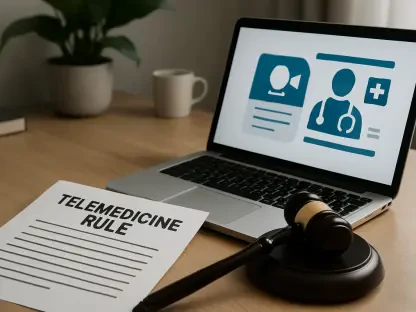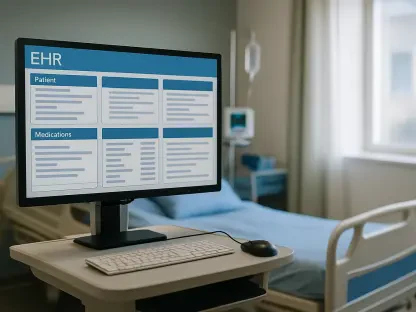As virtual visits replace waiting rooms and care plans flow through apps and analytics, the measure of reliable medicine increasingly rests on whether sensitive health data stays protected, is explained plainly, and is handled with respect that matches clinical standards of care. Patients judge competency not just by bedside manner but by breach history, consent clarity, and how quickly issues are disclosed and remedied. This shift did not diminish medical expertise; it reframed it. Security and transparency now function as the connective tissue of digital care, bridging technical complexity with ethical stewardship. When organizations demonstrate credible safeguards and communicate them without jargon, participation rises, disclosure deepens, and the benefits of data-driven care become possible without trading away privacy or dignity.
Why Trust Matters Now
Trust has always been the hidden architecture of healthcare, yet the move to data-rich care made it both more fragile and more measurable. People share details about genetic risks, mental health, reproductive choices, and social stressors, knowing that misuse could trigger discrimination, financial harm, or stigma that endures long after a clinical encounter ends. A single breach erodes confidence across entire networks, not only the breached entity, because data does not honor organizational borders. However, when patients feel assured that safeguards are visible and enforced, honesty increases, gaps in history close, and clinicians can tailor care without defensive omissions or partial truths that compromise safety.
Moreover, trust supports adherence and long-term engagement, especially when treatment requires sustained monitoring through apps, sensors, or remote coaching. Patients who believe their information is safe are more likely to enable sharing between specialists, respond to prompts, and report sensitive changes early. In contrast, mistrust inflates no-show rates and shrinks data quality, which, in turn, weakens clinical decision support and the predictive power of analytics. The path forward is not blind reassurance but verifiable protection paired with clear explanations of rights, choices, and recourse. In that environment, transparency amplifies trust because patients can see the guardrails, not just hear promises about them.
Digital Shift: Promise and Risk
The digital overhaul broadened access and personalization through EHRs, telemedicine, wearables, and AI triage tools that process signals faster than any manual workflow. Yet with each connected portal, sensor, and interface, the attack surface widens in ways that simple perimeter defenses cannot cover. Data flows through third-party processors, cloud services, and APIs where misconfiguration, weak credentials, or unpatched software can open quiet back doors. Security, therefore, belongs in architecture and procurement decisions as much as it does in endpoint controls. Designing for least privilege, segmentation, and encrypted-by-default pathways reduces blast radius when incidents occur.
Innovation should not slow, but it should be staged with safeguards that move in lockstep. Before a remote monitoring program scales, access models and audit trails must be stress-tested, and data minimization should be applied so that only necessary information travels. Similarly, AI diagnostics need guardrails for training data, model access, and output logging to prevent leakage or bias from compounding harm. In practice, that means embedding security checkpoints into change management, validating configurations in pre-production, and tying go-live approvals to evidence of resilience. When protection is part of delivery, progress accelerates because new tools launch with assurance rather than uncertainty.
Security as a Strategic, Adaptive Capability
Static defenses have little chance against fast-moving threats that probe systems continuously, which is why continuous risk management replaced occasional audits as the baseline. Organizations are shifting to real-time monitoring that ingests identity signals, network telemetry, and application logs to detect suspicious patterns—such as off-hours access to high-sensitivity records or anomalous data exfiltration from a vendor account. AI-enabled analytics help triage noise and surface likely incidents more quickly, but success depends on disciplined playbooks that spell out who investigates, who communicates, and how containment unfolds without disrupting critical care.
Equally important is treating regulatory compliance as a foundation, not a finish line. Meeting rules for encryption, retention, and breach notification provides structure, yet resilience grows when visibility extends to “who touched what, when, and why.” That visibility requires robust identity governance, just-in-time access, and automated revocation tied to role changes. Regular tabletop exercises convert plans into muscle memory so that containment is measured in minutes, not days. Investment in this capability pays off beyond incident response: it improves vendor oversight, sharpens architecture decisions, and demonstrates to patients and partners that protection is not performative but operational.
Transparency Patients Can Understand and Use
Transparency begins where jargon ends. Patients deserve to know what data is collected, where it resides, who can see it, and for what purpose, expressed in language that mirrors everyday decisions rather than technical manuals. Plain explanations of encryption, retention periods, and access controls do more than inform; they signal respect. Offering consent management that actually changes data flows—rather than a checkbox formality—advances autonomy. Self-service access logs, when designed with clear labels and timestamps, give patients proof rather than promises that rights are honored.
Accountability also means proactive, timely updates when systems change or policies evolve, not buried notices that arrive months later. Clear pathways to ask questions or revoke sharing should be visible in portals and visit summaries, and disclosures about third-party partners need to list names, roles, and limits. Importantly, transparency should extend to adverse events. When incidents occur, direct communication that explains what happened, what was affected, and how protections improved shows that privacy matters even under pressure. Over time, such candor builds a track record that patients can point to when deciding how widely to share sensitive information.
Human Factors And A Safety-First Culture
Many breaches do not start with sophisticated code; they start with a hurried click, a reused password, or an ambiguous instruction for sending a file. Training that treats staff as partners rather than liabilities makes a difference. Short, frequent refreshers on phishing, social engineering, and secure messaging beat annual lectures. Templates for patient communications that mask identifiers, protocols for sharing images or labs, and simple “when in doubt” checklists reduce ambiguity that leads to mistakes. A non-punitive reporting channel encourages early escalation when something seems off, turning near misses into learning moments rather than silent risks.
Culture shows up in small choices during busy days. Do teams challenge unexpected access requests from “IT,” or do they comply quickly to be helpful? Are clinicians pressed to bypass safeguards for convenience, or are workflows designed so that the secure path is also the fastest path? Leadership policies matter, but norms built through repetition matter more. Recognizing individuals who spot threats, celebrating departments that pass phishing simulations, and closing the loop on reported issues reinforce the message that every role is part of defense-in-depth. Technology provides guardrails; culture keeps people on the road.
Shared Responsibility Across The Ecosystem
Health data rarely stays within a single organization, which makes shared standards and clear contracts essential. Providers, payers, pharmacies, and technology partners need aligned baselines for encryption, identity, and logging so protections travel with the data. Zero-trust access models—verifying identity, device health, and context on every request—limit lateral movement when a credential is compromised. Vendor diligence should go beyond questionnaires: independent attestations, penetration tests, and right-to-audit clauses create accountability that endures after procurement. When risk scoring informs onboarding, high-impact partners receive deeper scrutiny and more stringent controls.
Interoperability must include security semantics, not just clinical data formats. APIs should enforce consent scopes, redact unnecessary fields, and provide verifiable proof of access decisions. Data minimization reduces exposure by default, making stolen troves less valuable and breaches less damaging. Incident collaboration agreements clarify how alerts are shared, which logs are provided, and who notifies patients when multiple parties touch the same records. By coordinating ahead of time, organizations avoid finger-pointing during a crisis and shorten the time to containment. In effect, the ecosystem becomes an extension of the security team, with shared visibility and shared stakes.
Security As Patient Care And Ethical Stewardship
Treating security as part of quality care reframes privacy from paperwork to practice. Just as medication reconciliation and allergy checks protect patients, strong identity verification and access reviews prevent the digital equivalents of medical error. Embedding safeguards into clinical routines—such as verifying patient identity before releasing records or defaulting to secure messaging for follow-ups—aligns everyday actions with ethical commitments. Clear communication about why a step is required turns a perceived hurdle into a sign of professionalism. Over time, consistent protection builds a reputation that improves recruitment, partnership opportunities, and patient retention.
This alignment also elevates outcomes. When patients believe their data is safe, they are more willing to enroll in remote programs, connect devices, and authorize cross-organization sharing that prevents duplication and delays. Clinicians gain fuller histories and more complete signals, raising the quality of decisions. Ethics and efficiency stop competing because the same practices that protect privacy also reduce rework and incident costs. Ultimately, security functions as a clinical enabler: it keeps care plans intact, sustains trust through transitions, and assures communities that modern medicine can be both data-rich and dignity-preserving.
Turning Protection Into Progress
The path forward favored pragmatic steps that turned principles into routines: architect systems around least privilege and segmentation; instrument environments for real-time monitoring and rapid containment; translate policies into plain language and visible choice; and train staff until secure behavior felt like muscle memory. Partnerships tightened through shared standards, stronger contracts, and interoperable controls that kept protections attached to data across boundaries. With these moves, security stopped being an overhead cost and became a catalyst for better care.
Crucially, the work did not end at deployment. Programs evolved as threats shifted, audits fed redesigns, and incident reviews produced measurable changes rather than promises. Patients saw not only fewer headlines but clearer explanations, faster notices, and tangible tools to manage consent. That combination—credible defenses, transparent communication, and human responsibility—sustained trust while unlocking digital medicine’s benefits. By treating security and transparency as clinical essentials, organizations delivered safer, more engaging care and set a durable standard for the next wave of innovation.









